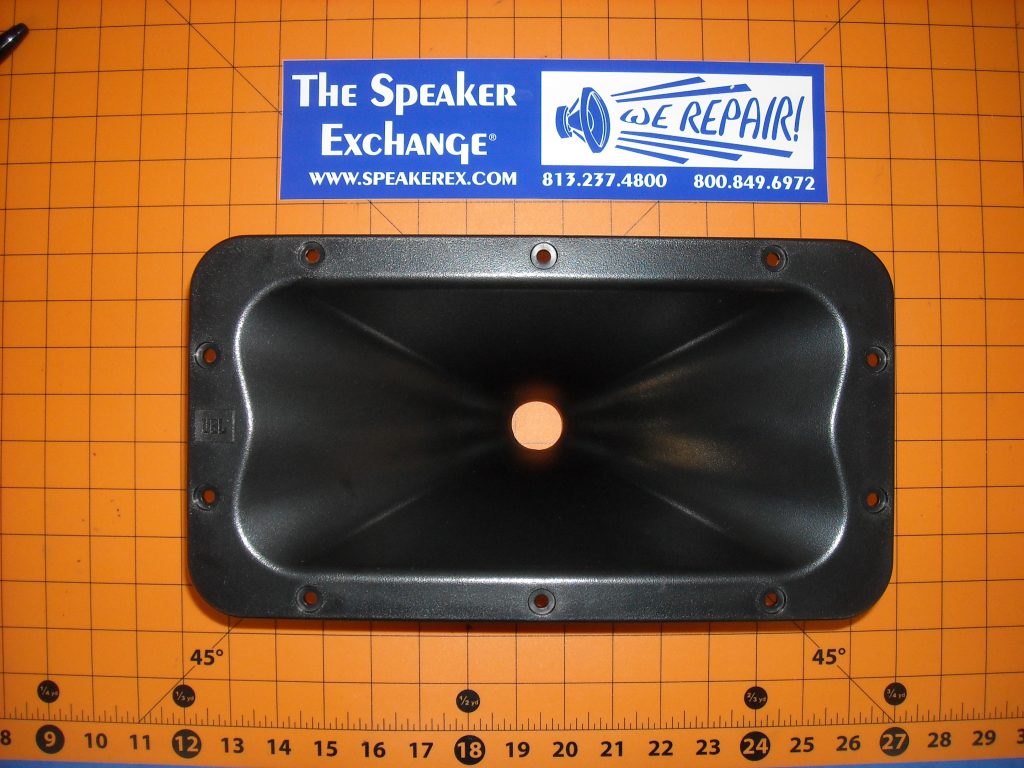The "standard" 6x12" Econowave guide was originally from JBL, discontinued,
Edit: The JBL 6x12" part is available here, not dirt cheap but worth it for better top end:

 reconingspeakers.com
reconingspeakers.com
but then also made by Pyle
(PH612) and now only by Dayton (H6512). People rave about it but if you look at the raw frequency
response with most drivers it is quite bumpy and not very good with depressions around 1 and 3KHz.
When I first heard about this guide I wondered which JBL models it was used in which turned out to be the
JRX212 and some other similar models:
JRX212 | JBL Professional Loudspeakers
I'll get right to the solution found by Mike Chua at Ampslab-Spk. One might think that this guide would work
best with the one JBL designed for it, yes? That was the JBL2414H-C compression driver that is only $55
on Amazon. Here are Mike's unsmoothed measurements, wow unbelievable, almost a textbook perfect curve:
https://ampslab-spk.com/2021/05/03/h6512-jbl-2414-review/

Compare that to measurements with other drivers including the Selenium D220Ti as favored here by many.
Note that all of these drivers have trouble in the 1 and 3KHz range:
https://ampslab-spk.com/2020/06/17/pyle-ph612/
Red curve below is the Selenium D220Ti as a comparison, note the 7 dB drop from 1.5 to 3KHz:

Edit: Polars and test of the H6512 Dayton guide, note that it is stated that this is not an exact copy of the JBL and that the throat diameter is a bit too large:
https://www.mtg-designs.com/tips-tricks-tests/waveguide-shootout/1in-thread-horns/dayton-h6512
Edit: Polars and test of the China Clone of the JBL 6x12", MTG says that this is a faithful copy of the original JBL so this data should also appy to the JBL:

 www.mtg-designs.com
www.mtg-designs.com
This driver should be a significant upgrade for many of the Econowave designs using the 6x12" waveguide
with XO mods as needed.
Edit: The JBL 6x12" part is available here, not dirt cheap but worth it for better top end:

JBL 338800-001 Replacement Horn Lens
Brand New Genuine JBL Replacement Screw-on Horn Lens #338800-001. Used in JRX100 Series, JRX200 Series, PRX600 Series, Sound Factor Series. Used in the following models: JRX112M, JRX112MI, JRX115, JRX115I, JRX125, JRX212, JRX215, JRX225, SF12M, SF12MI, SF15, SF15I, SF25, PRX612M, PRX615M...
but then also made by Pyle
(PH612) and now only by Dayton (H6512). People rave about it but if you look at the raw frequency
response with most drivers it is quite bumpy and not very good with depressions around 1 and 3KHz.
When I first heard about this guide I wondered which JBL models it was used in which turned out to be the
JRX212 and some other similar models:
JRX212 | JBL Professional Loudspeakers
I'll get right to the solution found by Mike Chua at Ampslab-Spk. One might think that this guide would work
best with the one JBL designed for it, yes? That was the JBL2414H-C compression driver that is only $55
on Amazon. Here are Mike's unsmoothed measurements, wow unbelievable, almost a textbook perfect curve:
https://ampslab-spk.com/2021/05/03/h6512-jbl-2414-review/
Compare that to measurements with other drivers including the Selenium D220Ti as favored here by many.
Note that all of these drivers have trouble in the 1 and 3KHz range:
https://ampslab-spk.com/2020/06/17/pyle-ph612/
Red curve below is the Selenium D220Ti as a comparison, note the 7 dB drop from 1.5 to 3KHz:
Edit: Polars and test of the H6512 Dayton guide, note that it is stated that this is not an exact copy of the JBL and that the throat diameter is a bit too large:
https://www.mtg-designs.com/tips-tricks-tests/waveguide-shootout/1in-thread-horns/dayton-h6512
Edit: Polars and test of the China Clone of the JBL 6x12", MTG says that this is a faithful copy of the original JBL so this data should also appy to the JBL:
MTG Designs - Clone JBL 338800-001
Manufacturers Info Brand: ---- Model: 338800-001 *Clone* Style: Progressive Transition Coverage (H x V): 90 x 50 Minimum Frequency: ---- Throat: 1" Mounting Type: 1-3/8"-18 TPI Dimensions: 12" W x 6.5" H x 4.25" D
This driver should be a significant upgrade for many of the Econowave designs using the 6x12" waveguide
with XO mods as needed.
Last edited:















